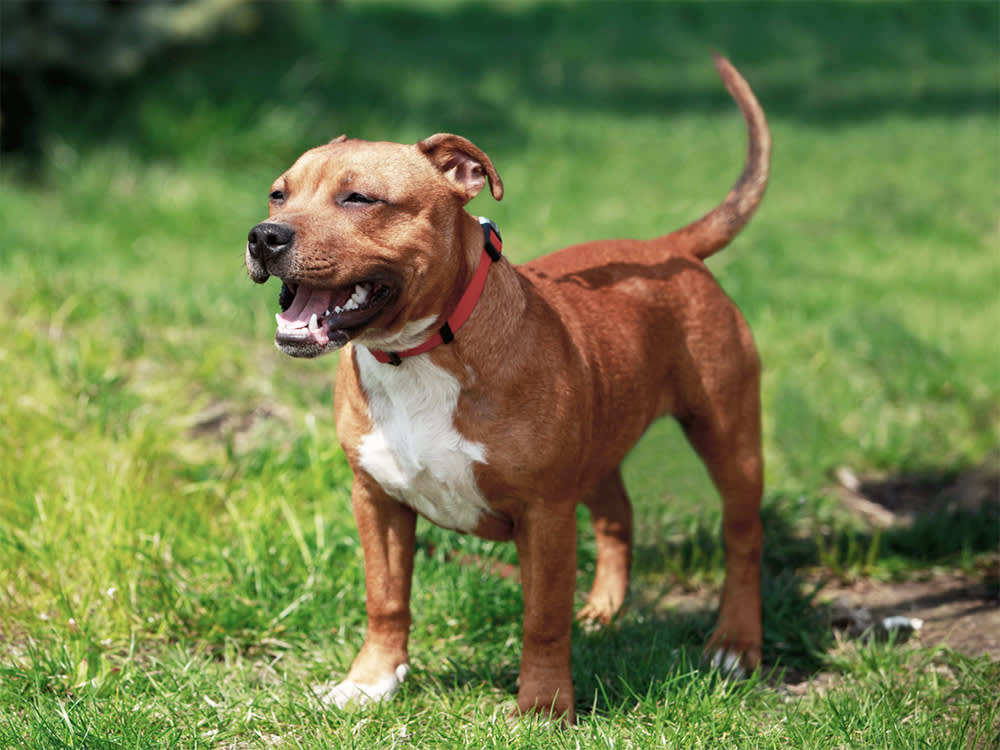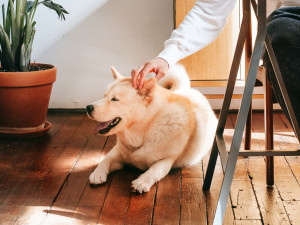Dogs May Wag Their Tails Because Humans Love Rhythm, New Research Says
Science is getting to the bottom of why dogs are such tail-talkers.

Share Article
A dog’s tail can communicate a lot — whether it’s a classically cheerful “welcome home, human” wag or a stiff, tense, “back off” twitch. But while plenty of research has investigated how varied a pup’s tail behavior can be, we still don’t know exactly why dogs wag them. Their wolf ancestors did not use their tails in such a way, so how did domesticated dogs come to be such tail-ftalkers? A new study sheds some light on this question.
First of all, what does a wagging tail mean?
A dog’s tail is an important tool used for communicating with humans. “Visual signals are used as communicative cues in both human-dog and dog-dog interactions,” Silvia Leonetti, the first author of the study Why do dogs wag their tails?opens in new tab, wrote. “In particular, tail attributes such as carriage (i.e. position) and wagging provide readily observable informational cues, which humans use to infer the inner states of dogs.”
Though it’s a common misconception, not all tail wagging is positive. As trainer and behaviorist Karen B. London wrote for Kinship, there are many different types of tail wags. Body language, speed, tension, and rotation can all give clues to what that particular wag really means.
“We think that the carriage and the speed, the [beats per minute], might make the difference between ‘I’m so happy to see you’ versus ‘I’m going to attack you.’ That’s what classical dog behavior books report. But it hasn’t been properly quantified yet,” Andrea Ravignani, another writer on the study, told Science magazineopens in new tab.

What’s certain is that domesticated dogs are more likely to wag their tails than other animals; many other animals use their tails for more utilitarian purposes like balancing or moving, rather than communicating. “One study that looked at more than 40 species over a four-year time span found that the domestic dog was the species that wags its tail most,” Silvia Leonetti told Science.
Why do dogs wag their tails?
For their study, Silvia Leonetti and her colleagues set out to determine how domesticated dogs came to rely so heavily on their tails for communication. To get to the bottom of the question, the researchers analyzed over 100 different studies on canine tail behavior.
They report that dog domestication began during the Upper Paleolithic period (about 35,000 years ago) and resulted in countless changes including teeth size, reduced aggression, and ear shape. This process also “shaped dogs’ cognition and sociability in both dog–dog and dog–human interactions.”
Humans selected dogs with the most desirable traits when domesticating them, but it isn’t clear whether tail wagging was an intentional or unintentional result of breeding. One hypothesis, called the “domestication syndrome” hypothesis, is that wagging behavior was a “by-product of selection for another trait, such as tameness or friendliness toward humans.”
Another hypothesis, which the researchers call the “domesticated rhythmic wagging hypothesis,” is that humans may have specifically targeted dogs who wagged their tails more — and more rhythmically. Why? Simply because humans love rhythm. “Cognitive neuroscience shows that human brains prefer rhythmic stimuli, which trigger pleasurable responses and engage brain networks that are part of the reward system,” Leonetti wrote.
Overall, the researchers found that most previous research on tail wagging has focused on measuring “when, for how long or at what rate tail wagging (broadly defined) occurs,” which “make[s] teasing apart different evolutionary hypotheses challenging.”
In future studies, the researchers hope to see neuroimaging used to shed more light on tail behavior. “We still don’t know exactly which parts of the dog brain control which features of the tail wagging. Is tail wagging for dogs similar to breathing that we can partly control? Or is it similar to blushing? Do rhythmic areas in dog brains activate? I would also want to see whether abstract thinking areas, communication areas, and so on, activate,” Ravignani tells Science. “It’s a whole world of possibilities to explore and understand.”

Sio Hornbuckle
Sio Hornbuckle is the Assistant Editor at Kinship, where they frequently write for the site. As a writer, they specialize in pet news, animal science, and pop culture. They live in New York City with their cat, Toni Collette.
Related articles
![Jack Russell puppy grunting while laying on blanket and crying out]()
Listen Up! Your Puppy Is Trying to Talk to You
How to make sense of all those grunts and whines.
![Unrecognizable man sitting at desk petting his dog]()
How to Pet a Dog — Yes, You Do Need Lessons
There’s a difference between being affectionate and being annoying.
![Dog Lays On The Ground Barking]()
Dog Speak: The Sounds of Dogs
Decoding the many sounds your pup makes.
![A dog looking up with a cute face]()
How to Get Your Scared Dog to Trust You
Using these tips, your skittish dog will warm up to you.
![A woman sitting on a floor playing with her dogs.]()
How to Know if Your Dog Has Imprinted on You
If they’re following you around like your shadow, there’s a reason for that.






